
Varian Microeconomics Workout
.pdf
(a) If the ¯rms each operate independently, the equilibrium amount of
honey produced will be |
|
and the equilibrium amount of apples |
||
produced will be |
|
|
. |
|
(b) Suppose that the honey and apple ¯rms merged. What would be the
pro¯t-maximizing output of honey for the combined ¯rm? |
|
|
|||
What would be the pro¯t-maximizing amount of apples? |
|
|
|
. |
|
(c) What is the socially e±cient output of honey? |
|
|
If the ¯rms |
||
stayed separate, how much would honey production have to be subsidized
to induce an e±cient supply? .
34.3 (2) In El Carburetor, California, population 1,001, there is not much to do except to drive your car around town. Everybody in town is just like everybody else. While everybody likes to drive, everybody complains about the congestion, noise, and pollution caused by tra±c. A typical resident's utility function is U(m; d; h) = m+16d¡d2 ¡6h=1; 000, where m is the resident's daily consumption of Big Macs, d is the number of hours per day that he, himself, drives, and h is the total amount of driving (measured in person-hours per day) done by all other residents of El Carburetor. The price of Big Macs is $1 each. Every person in El Carburetor has an income of $40 per day. To keep calculations simple, suppose it costs nothing to drive a car.
(a) If an individual believes that the amount of driving he does won't affect the amount that others drive, how many hours per day will he choose
to drive? (Hint: What value of d maximizes U(m; d; h)?)
(b) If everybody chooses his best d, then what is the total amount h of
driving by other persons? |
|
|
. |
(c) What will be the utility of each resident? |
|
. |
|
(d) If everybody drives 6 hours a day, what will be the utility level of a
typical resident of El Carburetor? |
|
. |
(e) Suppose that the residents decided to pass a law restricting the total number of hours that anyone is allowed to drive. How much driving should everyone be allowed if the objective is to maximize the utility of the typical resident? (Hint: Rewrite the utility function, substituting
1; 000d for h, and maximize with respect to d.) |
|
. |
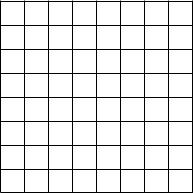
(f) The same objective could be achieved with a tax on driving. How much would the tax have to be per hour of driving? (Hint: This price would have to equal an individual's marginal rate of substitution between
driving and Big Macs when he is driving the \right" amount.) |
|
. |
34.4 (3) Tom and Jerry are roommates. They spend a total of 80 hours a week together in their room. Tom likes loud music, even when he sleeps. His utility function is UT (CT ; M) = CT + M, where CT is the number of cookies he eats per week and M is the number of hours of loud music per week that is played while he is in their room. Jerry hates all kinds of music. His utility function is U(CJ ; M) = CJ ¡ M2=12. Every week, Tom and Jerry each get two dozen chocolate chip cookies sent from home. They have no other source of cookies. We can describe this situation with a box that looks like an Edgeworth box. The box has cookies on the horizontal axis and hours of music on the vertical axis. Since cookies are private goods, the number of cookies that Tom consumes per week plus the number that Jerry consumes per week must equal 48. But music in their room is a public good. Each must consume the same number of hours of music, whether he likes it or not. In the box, let the height of a point represent the total number of hours of music played in their room per week. Let the distance of the point from the left side of the box be \cookies for Tom" and the distance of the point from the right side of the box be \cookies for Jerry."
Music
80
60
40
20
0 |
12 |
24 |
36 |
48 |
|
|
|
Cookies |
|
(a) Suppose the dorm's policy is that you must have your roommate's permission to play music. The initial endowment in this case denotes the situation if Tom and Jerry make no deals. There would be no music, and each person would consume 2 dozen cookies a week. Mark this initial endowment on the box above with the label A. Use red ink to sketch the indi®erence curve for Tom that passes through this point, and use blue ink to sketch the indi®erence curve for Jerry that passes through

this point. [Hint: When you draw Jerry's indi®erence curve, remember two things: (1) He hates music, so he prefers lower points on the graph to higher ones. (2) Cookies for Jerry are measured from the right side of the box, so he prefers points that are toward the left side of the box to points that are toward the right.] Use blue ink to shade in the points representing situations that would make both roommates better o® than they are at point A.
(b) Suppose, alternatively, that the dorm's policy is \rock-n-roll is good for the soul." You don't need your roommate's permission to play music. Then the initial endowment is one in which Tom plays music for all of the 80 hours per week that they are in the room together and where each consumes 2 dozen cookies per week. Mark this endowment point in the box above and label it B. Use red ink to sketch the indi®erence curve for Tom that passes through this point, and use blue ink to sketch the indi®erence curve for Jerry that passes through this point. Given the available resources, can both Tom and Jerry be made better o® than they
are at point B? |
|
. |
34.5 (0) A clothing store and a jewelry store are located side by side in a small shopping mall. The number of customers who come to the shopping mall intending to shop at either store depends on the amount of money that the store spends on advertising per day. Each store also attracts some customers who came to shop at the neighboring store. If the clothing store spends $xC per day on advertising, and the jeweller spends $xJ on advertising per day, then the total pro¯ts per day of the clothing store are ¦C(xC; xJ ) = (60 + xJ )xC ¡ 2x2C, and the total pro¯ts per day of the jewelry store are ¦J (xC; xJ ) = (105 + xC)xJ ¡ 2x2J . (In each case, these are pro¯ts net of all costs, including advertising.)
(a) If each store believes that the other store's amount of advertising is independent of its own advertising expenditure, then we can ¯nd the equilibrium amount of advertising for each store by solving two equations in two unknowns. One of these equations says that the derivative of the clothing store's pro¯ts with respect to its own advertising is zero. The other equation requires that the derivative of the jeweller's pro¯ts with respect to its own advertising is zero. These two equations are written
as |
|
|
|
|
|
|
The equilibrium amounts of |
|||
advertising are |
|
|
and |
|
|
Pro¯ts of the clothing |
||||
store are |
|
|
and pro¯ts of the jeweller are |
|
. |
|||||
(b) The extra pro¯t that the jeweller would get from an extra dollar's worth of advertising by the clothing store is approximately equal to the derivative of the jeweller's pro¯ts with respect to the clothing store's advertising expenditure. When the two stores are doing the equilibrium
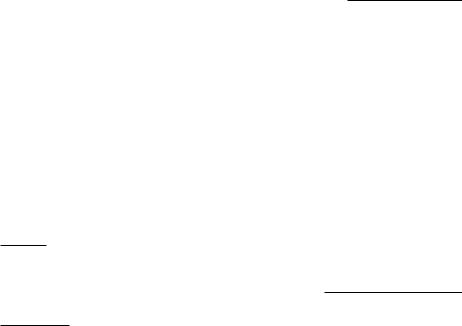
amount of advertising that you calculated above, a dollar's worth of advertising by the clothing store would give the jeweller an extra pro¯t of
about |
|
and an extra dollar's worth of advertising by the jeweller |
||
would give the clothing store an extra pro¯t of about |
|
. |
||
|
||||
(c) Suppose that the owner of the clothing store knows the pro¯t functions of both stores. She reasons to herself as follows. Suppose that I can decide how much advertising I will do before the jeweller decides what he is going to do. When I tell him what I am doing, he will have to adjust his behavior accordingly. I can calculate his reaction function to my choice of xC, by setting the derivative of his pro¯ts with respect to his own advertising equal to zero and solving for his amount of advertising as a function of
my own advertising. When I do this, I ¯nd that xJ =
If I substitute this value of xJ into my pro¯t function and then choose xC
to maximize my own pro¯ts, I will choose xC = |
|
|
and he will |
||||
|
|
||||||
choose xJ = |
|
|
. In this case my pro¯ts will be |
|
|
|
|
|
|
|
|
|
|||
and his pro¯ts will be |
|
|
|
|
|
. |
|
(d) Suppose that the clothing store and the jewelry store have the same pro¯t functions as before but are owned by a single ¯rm that chooses the amounts of advertising so as to maximize the sum of the two stores'
pro¯ts. The single ¯rm would choose xC = |
|
and xJ = |
|
|
|
Without calculating actual pro¯ts, can you determine whether total pro¯ts will be higher, lower, or the same as total pro¯ts would be
when they made their decisions independently?
How much would the total pro¯ts be? |
|
. |
34.6 (2) The cottagers on the shores of Lake Invidious are an unsavory bunch. There are 100 of them, and they live in a circle around the lake. Each cottager has two neighbors, one on his right and one on his left. There is only one commodity, and they all consume it on their front lawns in full view of their two neighbors. Each cottager likes to consume the commodity but is very envious of consumption by the neighbor on his left. Curiously, nobody cares what the neighbor on his right is doing. In fact every consumer has a utility function U(c; l) = c ¡ l2, where c is his own consumption and l is consumption by his neighbor on the left. Suppose that each consumer owns 1 unit of the consumption good and consumes it.
(a) Calculate his utility level. |
|
. |

(b) Suppose that each consumer consumes only 3=4 of a unit. Will all
individuals be better o® or worse o®? .
(c) What is the best possible consumption if all are to consume the same
amount? .
(d) Suppose that everybody around the lake is consuming 1 unit. Can any two people make themselves both better o® either by redistributing
consumption between them or by throwing something away? |
|
. |
|
(e) How about a group of three people? |
|
. |
|
(f) How large is the smallest group that could cooperate to bene¯t all its
members? |
|
. |
34.7 (0) Jim and Tammy are partners in Business and in Life. As is all too common in this imperfect world, each has a little habit that annoys the other. Jim's habit, we will call activity X, and Tammy's habit, activity Y . Let x be the amount of activity X that Jim pursues and y be the amount of activity Y that Tammy pursues. Due to a series of unfortunate reverses, Jim and Tammy have a total of only $1,000,000 a year to spend. Jim's utility function is UJ = cJ + 500 ln x ¡ 10y, where cJ is the money he spends per year on goods other than his habit, x is the number of units of activity X that he consumes per year, and y is the number of units of activity Y that Tammy consumes per year. Tammy's utility function is UT = cT + 500 ln y ¡ 10x, where cT is the amount of money she spends on goods other than activity Y , y is the number of units of activity Y that she consumes, and x is the number of units of activity X that Jim consumes. Activity X costs $20 per unit. Activity Y costs $100 per unit.
(a) Suppose that Jim has a right to half their joint income and Tammy has a right to the other half. Suppose further that they make no bargains with each other about how much activity X and Y they will consume.
How much of activity X will Jim choose to consume? |
|
How |
||
much of activity Y will Tammy consume? |
|
|
. |
|
(b) Because Jim and Tammy have quasilinear utility functions, their utility possibility frontier includes a straight line segment. Furthermore, this segment can be found by maximizing the sum of their utilities. Notice that
UJ (cJ ; x; y) + UT (cT ; x; y)
=cJ + 500 ln x ¡ 20y + cT + 500 ln y ¡ 10x
=cJ + cT + 500 ln x ¡ 10x + 500 ln y ¡ 10y:

But we know from the family budget constraint that cJ +cT = 1; 000; 000¡ 20x ¡ 100y. Therefore we can write
UJ (cJ ; x; y) + UT (cT ; x; y) = 1; 000; 000 ¡ 20x ¡ 100y + 500 ln x ¡ 10x
+500 ln y ¡ 10y
=1; 000; 000 + 500 ln x + 500 ln y ¡ 30x ¡ 110y:
Let us now choose x and y so as to maximize UJ (cJ ; x; y) + UT (cT ; x; y). Setting the partial derivatives with respect to x and y equal to zero,
we ¯nd the maximum where x = and y = . If we plug these numbers into the equation UJ (cJ ; x; y) + UT (cT ; x; y) = 1; 000; 000 + 500 ln x + 500 ln y ¡30x ¡110y, we ¯nd that the utility possi-
bility frontier is described by the equation UJ + UC =
(You need a calculator or a log table to ¯nd this answer.) Along this frontier, the total expenditure on the annoying habits X and Y by Jim
and Tammy is . The rest of the $1,000,000 is spent on cJ and cT . Each possible way of dividing this expenditure corresponds to a di®erent point on the utility possibility frontier. The slope of the utility
possibility frontier constructed in this way is .
34.8 (0) An airport is located next to a large tract of land owned by a housing developer. The developer would like to build houses on this land, but noise from the airport reduces the value of the land. The more planes that °y, the lower is the amount of pro¯ts that the developer makes. Let X be the number of planes that °y per day and let Y be the number of houses that the developer builds. The airport's total pro¯ts are 48X¡X2, and the developer's total pro¯ts are 60Y ¡ Y 2 ¡ XY . Let us consider the outcome under various assumptions about institutional rules and about bargaining between the airport and the developer.
(a) \Free to Choose with No Bargaining": Suppose that no bargains can be struck between the airport and the developer and that each can decide on its own level of activity. No matter how many houses the developer builds, the number of planes per day that maximizes pro¯ts for the airport
is |
|
|
Given that the airport is landing this number of planes, the |
|||||||
|
|
|||||||||
number of houses that maximizes the developer's pro¯ts is |
|
Total |
||||||||
pro¯ts of the airport will be |
|
and total pro¯ts of the developer |
||||||||
will be |
|
|
The sum of their pro¯ts will be |
|
|
. |
||||
|
|
|
|
|||||||
(b) \Strict Prohibition": Suppose that a local ordinance makes it illegal to land planes at the airport because they impose an externality on the
developer. Then no planes will °y. The developer will build
houses and will have total pro¯ts of |
|
. |
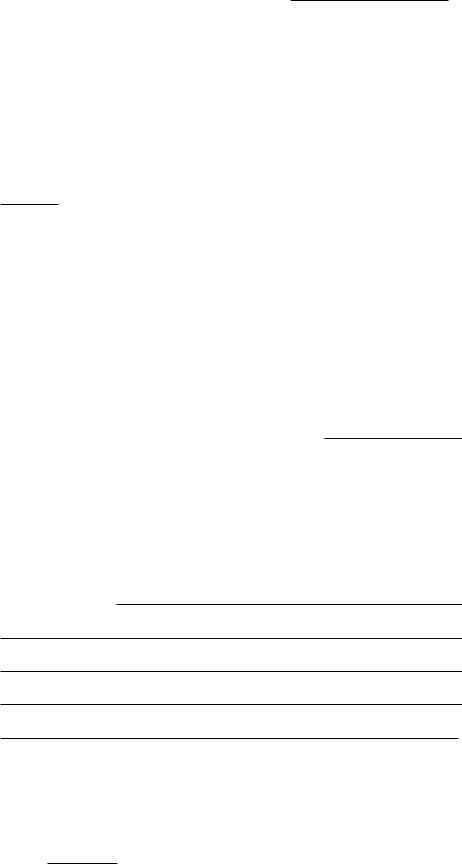
(c) \Lawyer's Paradise": Suppose that a law is passed that makes the airport liable for all damages to the developer's property values. Since the developer's pro¯ts are 60Y ¡Y 2 ¡XY and his pro¯ts would be 60Y ¡Y 2 if no planes were °own, the total amount of damages awarded to the developer will be XY . Therefore if the airport °ies X planes and the developer builds Y houses, then the airport's pro¯ts after it has paid damages will be 48X ¡ X2 ¡ XY . The developer's pro¯ts including the amount he receives in payment of damages will be 60Y ¡Y 2 ¡XY +XY = 60Y ¡Y 2. To maximize his net pro¯ts, the developer will choose to build
houses no matter how many planes are °own. To maximize its
pro¯ts, net of damages, the airport will choose to land |
|
|
planes. |
|||||
Total pro¯ts of the developer will be |
|
and total pro¯ts of the |
||||||
airport will be |
|
The sum of their pro¯ts will be |
|
|
. |
|||
34.9 (1) This problem continues the story of the airport and the developer from the previous problem.
(a) \Merger": Suppose that the housing developer purchases the airport.
What is the pro¯t function for the new joint entity?
|
|
|
|
|
|
|
|
. |
|
|
|
|
|
|
|
|
|
|
To maximize joint pro¯ts, it should build |
|
|
houses |
and |
|||
let |
|
planes land. Combined pro¯t is now |
|
|
. |
Ex- |
||
|
|
|
||||||
plain why each of the institutional rules proposed in the previous problem fails to achieve an e±cient outcome and hence has lower
combined pro¯ts.
.
(b) \Dealing": Suppose that the airport and the developer remain independent. If the original situation was one of \free to choose," could the developer increase his net pro¯ts by bribing the airport to cut back one °ight per day if the developer has to pay for all of the airport's lost
pro¯ts? The developer decides to get the airport to reduce its °ights by paying for all lost pro¯ts coming from the reduction of °ights.
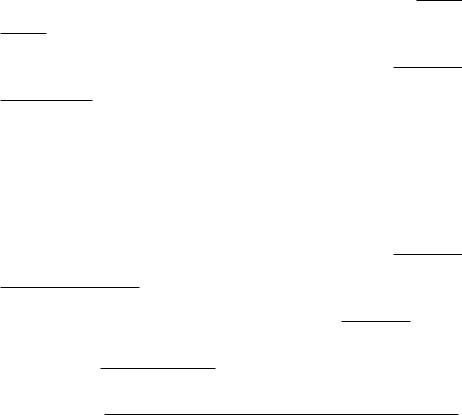
To maximize his own net pro¯ts, how many °ights per day should he pay
the airport to eliminate? |
|
. |
34.10 (1) Every morning, 6,000 commuters must travel from East Potato to West Potato. Commuters all try to minimize the time it takes to get to work. There are two ways to make the trip. One way is to drive straight across town, through the heart of Middle Potato. The other way is to take the Beltline Freeway that circles the Potatoes. The Beltline Freeway is entirely uncongested, but the drive is roundabout and it takes 45 minutes to get from East Potato to West Potato by this means. The road through Middle Potato is much shorter, and if it were un-congested, it would take only 20 minutes to travel from East Potato to West Potato by this means. But this road can get congested. In fact, if the number of commuters who use this road is N, then the number of minutes that it takes to drive from East Potato to West Potato through Middle Potato is 20 + N=100.
(a) Assuming that no tolls are charged for using either road, in equilibrium
how many commuters will use the road through Middle Potato?
What will be the total number of person-minutes per day spent
by commuters travelling from East Potato to West Potato?
(b) Suppose that a social planner controlled access to the road through Middle Potato and set the number of persons permitted to travel this way so as to minimize the total number of person-minutes per day spent by commuters travelling from East Potato to West Potato. Write an expression for the total number of person-minutes per day spent by commuters travelling from East Potato to West Potato as a function of the number N
of commuters permitted to travel on the Middle Potato road.
How many commuters per day would the social
planner allow to use the road through Middle Potato? In this case, how long would it take commuters who drove through Middle Potato
to get to work? What would be the total number of person-minutes per day spent by commuters travelling from East Potato
to West Potato? .
(c) Suppose that commuters value time saved from commuting at $w per minute and that the Greater Potato metropolitan government charges a toll for using the Middle Potato road and divides the revenue from this toll equally among all 6,000 commuters. If the government chooses the toll in such a way as to minimize the total amount of time that people spend
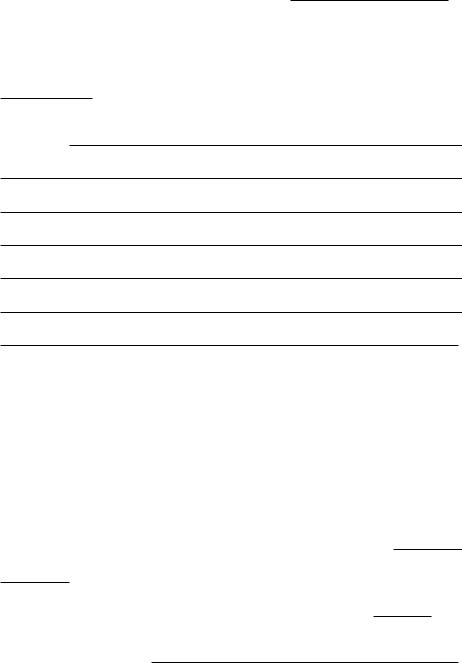
commuting from East Potato to West Potato, how high should it set the
toll? |
|
How much revenue will it collect per day from this toll? |
Show that with this policy every commuter is better o® than he or she was without the tolls and evaluate the gain per consumer
in dollars.
.
34.11 (2) Suppose that the Greater Potato metropolitan government rejects the idea of imposing tra±c tolls and decides instead to rebuild the Middle Potato highway so as to double its capacity. With the doubled capacity, the amount of time it takes to travel from East Potato to West Potato on the Middle Potato highway is given by 20 + N=200, where N is the number of commuters who use the Middle Potato highway. In the new equilibrium, with expanded capacity and no tolls, how many
commuters will use the Middle Potato highway? |
|
How long |
will it take users of the Middle Potato highway to get to work?
How many person-minutes of commuting time will be saved
by expanding the capacity of the Middle Potato highway? Do you think people will think that this capacity expansion will be a good
use of their tax dollars? .
